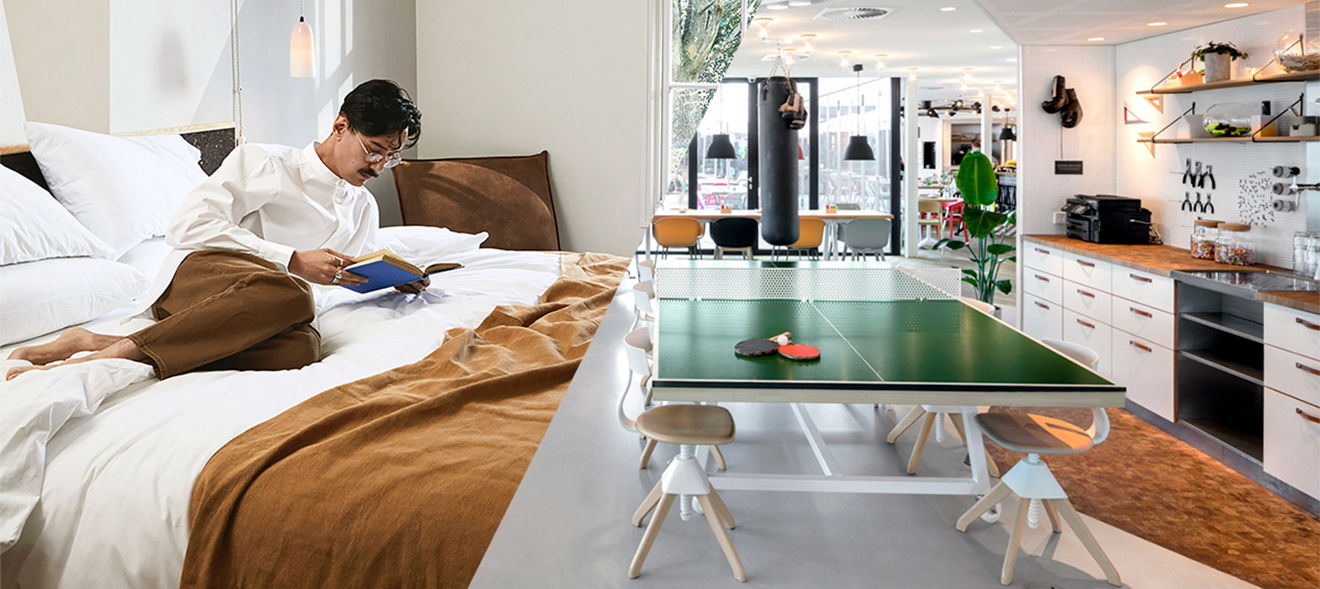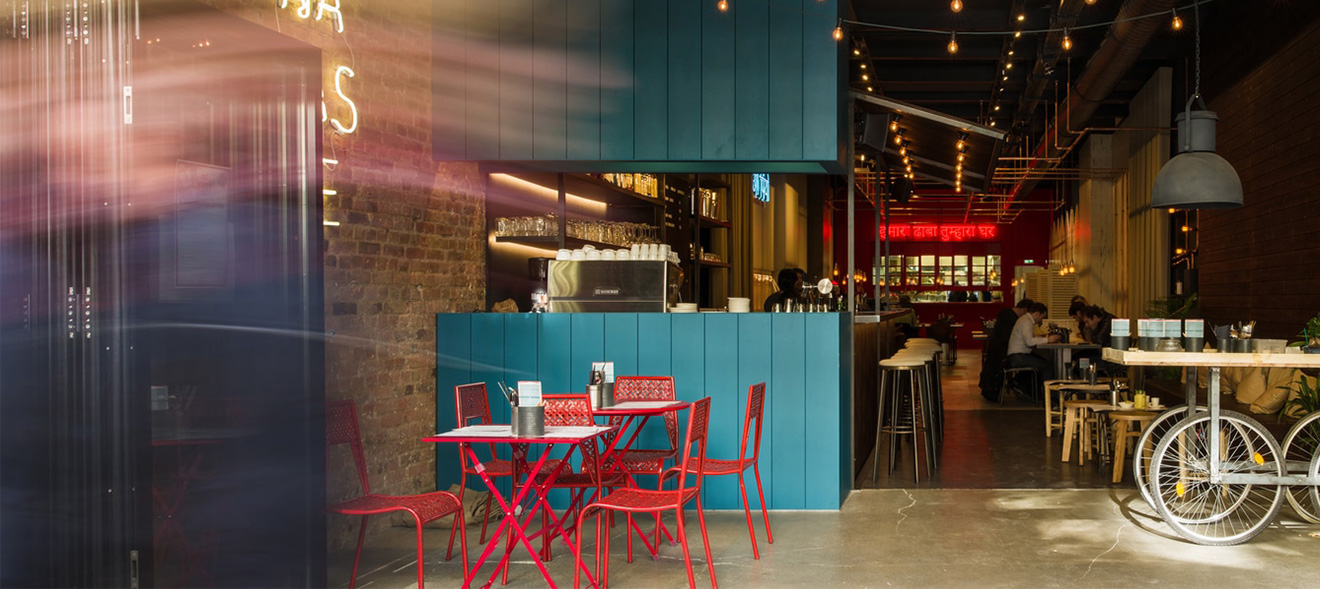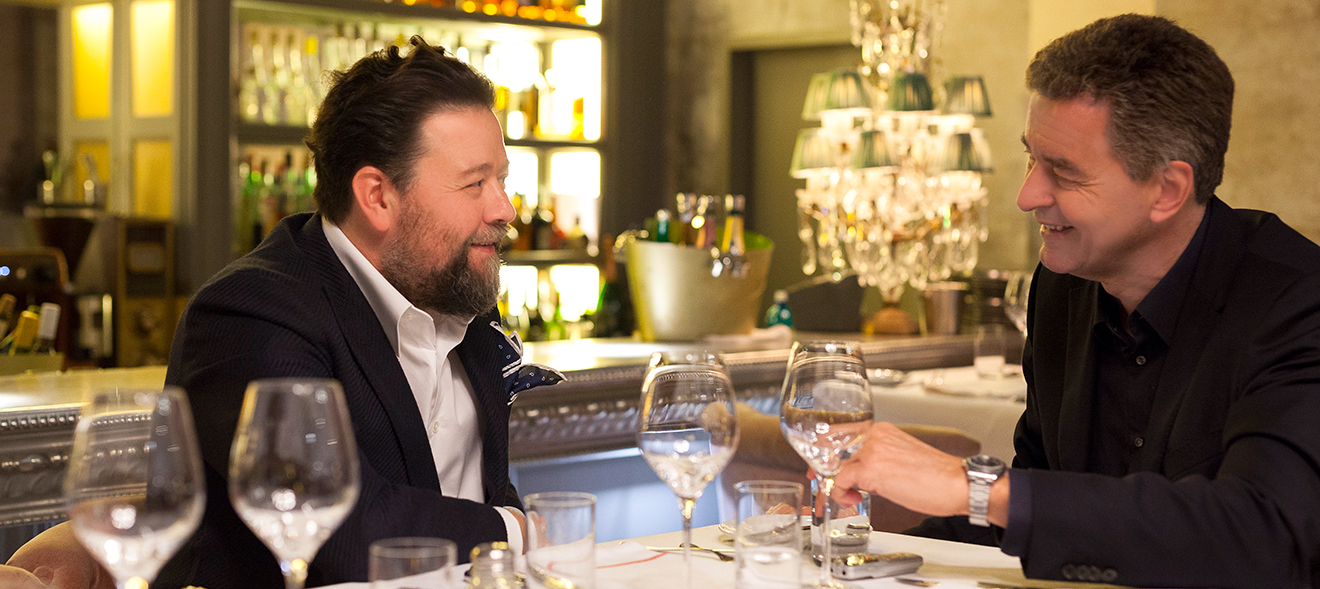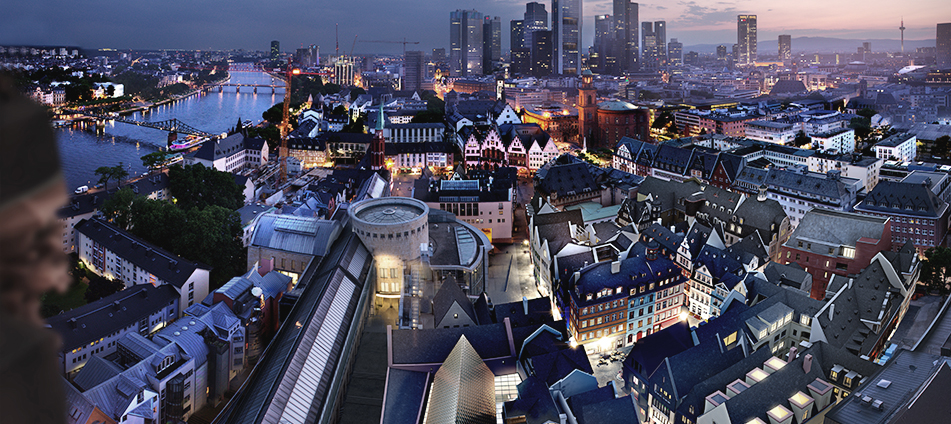“You cannot buy the soul of a restaurant,” says Milica Trajkovska Scheiber who, together with husband Matthias Scheiber and their excellent kitchen teams, has opened up two celebrated award-winning restaurants in Frankfurt. In a joint interview with Ambiente Vice President Nicolette Naumann, they told us how they have succeeded in creating interiors that fully reflect their emotionality and artistic sensibility. Without giving too much away, we can reveal one secret of their success: their new concept of luxury.
Magic moments
Although Gustav may be a traditional German name, the Michelin award-winning Restaurant Gustav, not far from the Alte Oper in Frankfurt, is certainly not traditional and heavy. The place is characterised by clean, fresh lines, which are lightly drawn on the architecture from the Belle Époque with its love of detail and create a fluid mixture of new vintage, Bauhaus and organic modernism. There is a happy mix of traditional and elegant materials – everything has the same status here. Instead of white tablecloths, napkins made of wafer-thin Schlitzer linen, bulging like snowballs, attract the eye. Every detail in the room arouses curiosity, and some, like the wooden mushroom firmly mounted on the tabletop, create a sense of mischief. The essence of this unique gourmet retreat is the blurring of the boundaries between restaurant, art space and concept store – a natural calculation and an astonishing overall experience that bears the signature of Milica Trajkovska Scheiber.


How did this empathetic get-together of interior design and culinary delights come about?
Milica Trajkovska Scheiber: “We renovated the rooms ourselves. It was a good decision to work with acoustic insulation made from Tyrolean eco-wool, which proved to be a complete success. What inspired me when I set it up? I love beautiful things and am always on the lookout at home and on our travels. For the Restaurant Gustav, for example, I got hold of some wonderful Art Deco glass spoons, which we use as decoration. We chose classic conference chairs from Eero Saarinen, on which you can sit incredibly comfortably for hours. Everything fits with the paintings and sculptures, most of which come from the Goldstein studio in Frankfurt, where internationally renowned artists with disabilities such as autism or Down’s syndrome work. I love the bulkiness of some of it.”
No tablecloths, no white porcelain, no silver cutlery. You seem to be a revolutionary in the world of fine dining.
Matthias Scheiber:“We were actually one of the first to do away with tablecloths and silverware. In that sense, we were pioneers. But who knows, maybe at some point we will be one of the first to start using them again. It must fit the concept. We discovered our stainless steel cutlery by chance in a department store in Paris. It was designed by the British designer Robert Welch. There are so many myths in fine dining, for example that white porcelain is a must. That was a long time ago.”



Your ceramic tableware is handmade. Is that a statement?
Milica Trajkovska Scheiber: “On the one hand it has to do with our roots. My grandmother in Macedonia always used earthenware crockery and iron pans, which I found really beautiful. And my mother-in-law runs a small pottery in the Hessische Bergstrasse region south of Frankfurt. On the other hand, our chef Jochim Busch is committed to using original and regional products for his creations and experiments. I am fascinated by the Bauhaus-inspired masterpieces of the legendary Margarethenhöhe ceramics workshop in Essen. Their high-fired pieces are extraordinarily robust, nothing flakes off, which is of course important for a restaurant. Although a single bowl is in the three-digit Euro price range, the investment was worth it.”
Jochim Busch: “I was in the pottery when it came to deciding on the shapes and colours and had the opportunity to influence the design, which is by no means usual as an employee of a fine dining restaurant. At Gustav we are very open-minded about one-off tableware, we even have a series of plates from an Estonian artist whose surface looks like baked foam.”
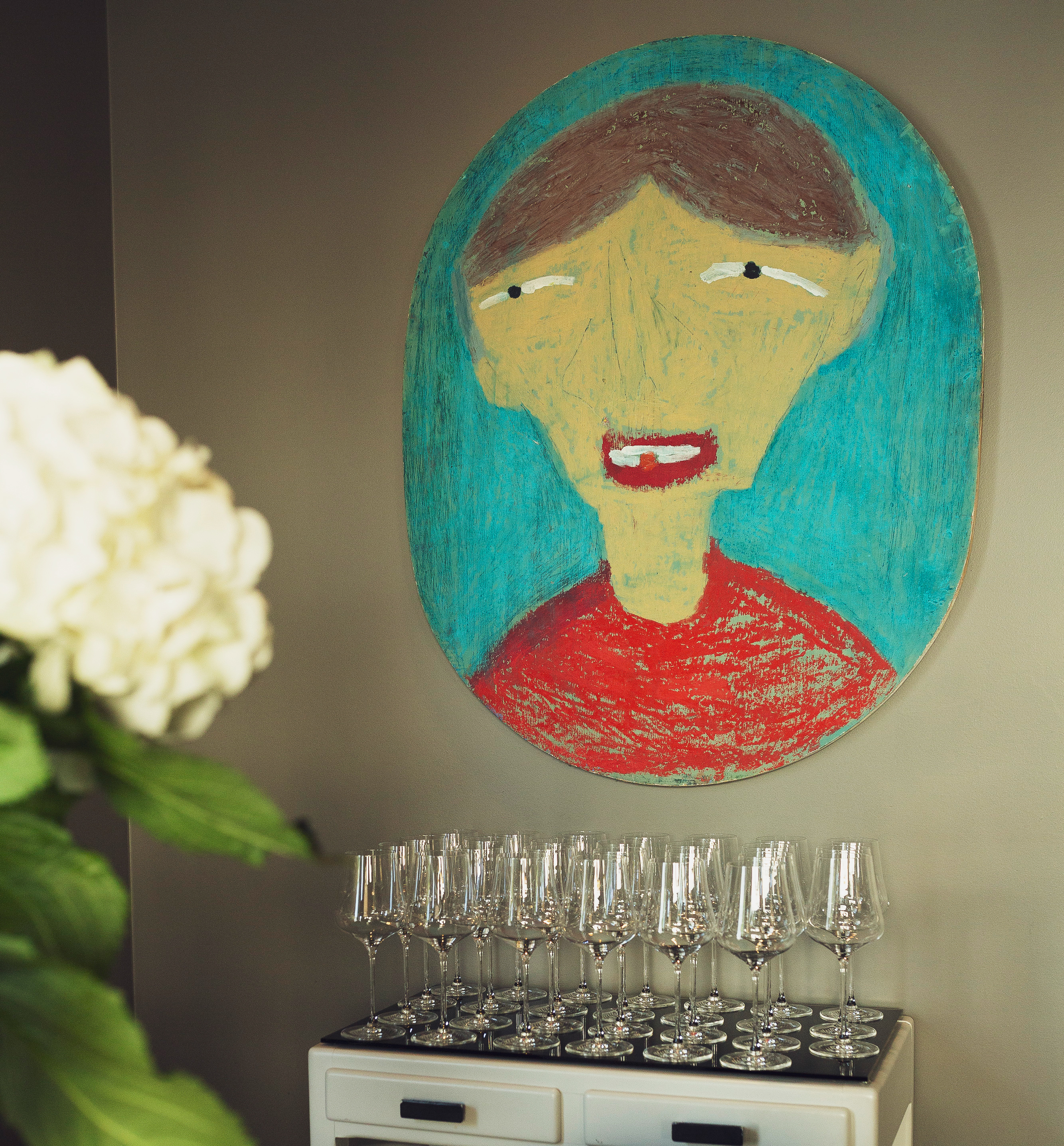

This question is for you, Ms Naumann. Different countries, different tastes – would the Gustav have been so successful outside Germany?
Nicolette Naumann: “In my experience, people in Europe and Asia are more open to the idea of trying out foods that do not correspond to their own eating habits. In the Gustav, for example, you can order salsify, a vegetable that was familiar to everyone in this region a hundred years ago. In this sense, the Gustav would probably be more successful in Tokyo than in New York. The slightly contemplative attitude to eating that is celebrated here would tend to find greater resonance in Asian cities. However, the Gustav would have too few plates according to Japanese standards. In Japan, different plates are used for each season of the year, which reflects the cultural importance of the seasons there. Plates don’t necessarily have to come from a particular product range, something that is still not common in Germany.”


Matthias Scheiber: “That is consistent with our experience. We have found that Asian guests feel a greater resonance to our food than, for example, visitors from the USA. We’ve had Japanese people asking if we often go to Asia because our ingredients are so ‘sensitive’. It is important that each guest becomes involved. Every dish is strong. We have an authentic cuisine – that is our philosophy.”
Milica Trajkovska Scheiber: “Interestingly, the Gustav and our Restaurant Weinsinn, for which we found a new home in Frankfurt’s Bahnhofsviertel district in 2017, have a relatively small overlap in terms of guest structure. There is an enthusiastic following there and here, but hardly any overlaps.”
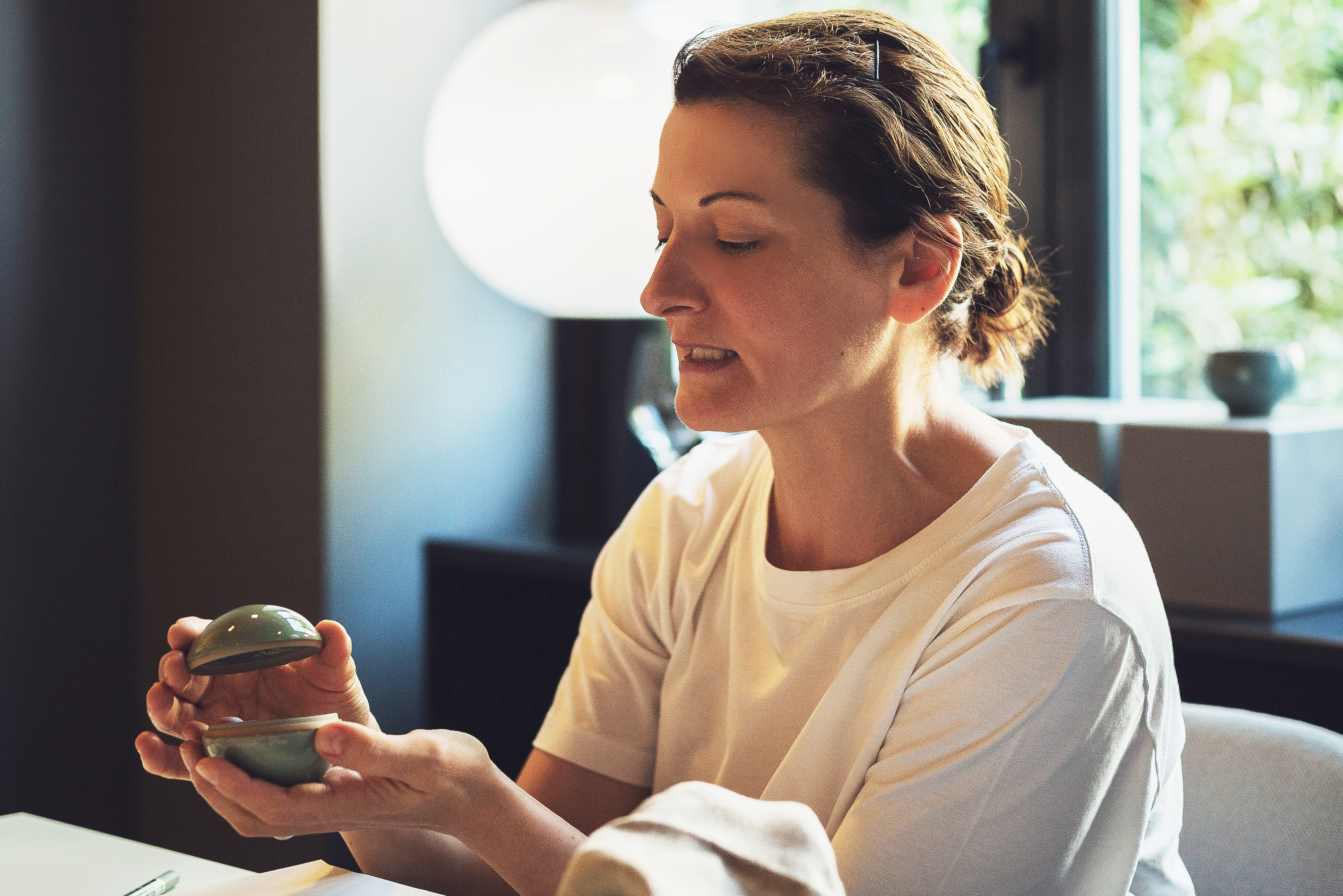
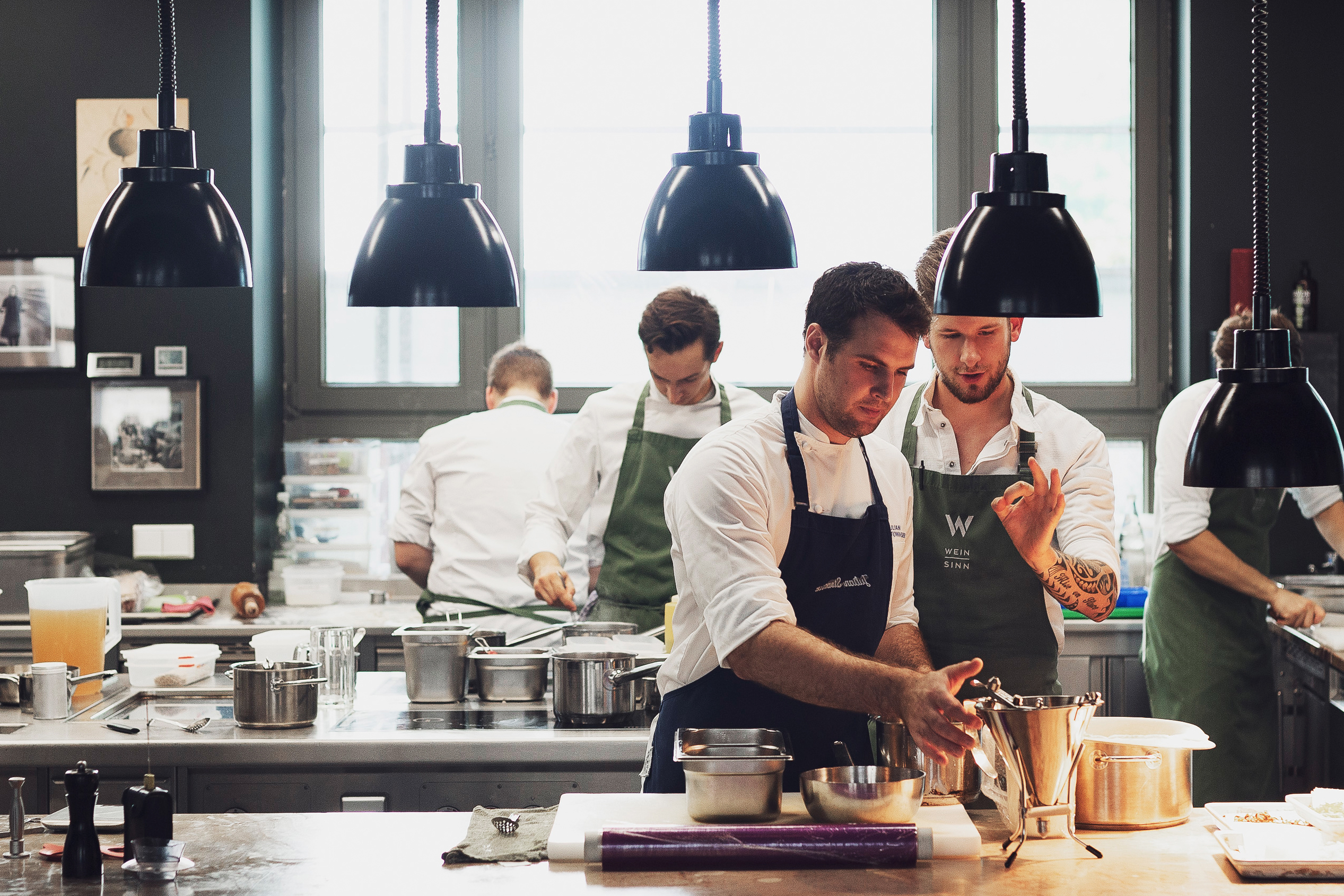

Brilliant designs
We believe we know an important reason why the two restaurants have a different following. Both are brilliant one-offs and each stands like a missing piece of a jigsaw puzzle in exactly the right place. Two restaurants from the same planet, but different stars. And in the Weinsinn, the star is another award-winning chef and his team. Here, guests enter a very different cosmos with an open kitchen, a handcrafted, creative menu with which Julian Stowasser earned himself a Michelin star very soon after opening and a purist, urban design in the 400 square metre space, which could equally be a mega artist’s loft in New York. The district in which the Weinsinn has established itself as an upmarket dining location also differs from the rest of the city. It’s a trendy vibrant neighbourhood with artists’ studios, red light area and cult pubs.


Change of location. The Weinsinn is a chic award-winning restaurant. What’s your impression, Ms Naumann?
Nicolette Naumann: “Despite its generous proportions and high ceilings, the restaurant has a very intimate feel. At first glance, it has something of a living room about it. As in the Gustav, contemporary art plays a role, but the high quality of the furniture is also immediately noticeable. The conference chairs, designed by French architect and designer Jean Prouvé in the 1950s, show how much attention is paid here to a high degree of functionality coupled with comfort.”
Ms Trajkovska Scheiber, there’s a “tree” growing in the room! Where do its roots go?
Milica Trajkovska Scheiber: “Anselm Baumann’s tree sculpture extends over two floors through the restaurant, which was once an office building. The ‘tree’ connects the upper and lower floors, as it were, where we have another event room. The one-year conversion here was definitely a greater challenge than that of the Gustav. I knew right away that we needed a professional LED lighting design. The large dining room was created from lots of small offices, the windows were replaced keeping to the original style and a new, impressive entrance was created. The floor also had to be removed and relaid. And we found the fabulous eco-wool sound insulation indispensable.”


And again there is a selection of carefully curated keypieces.
Milica Trajkovska Scheiber: “What I particularly love are the bohemian Art Deco vases and the green water glasses made of Murano glass. They’re all little treasures. My husband and I discovered the handmade glasses during a visit to the Venice Biennale and straightaway ordered them for our restaurant. The Biennale is an inspiring, must-visit event for us. We always go. At every corner you find new ideas. It’s simply magnificent.”
“Not just any old glass,” comments Matthias Scheiber. “Wine tastes better from hand-blown glasses. It’s not something you can explain physically.” Nicolette Naumann agrees: “With whisky, you can taste whether a glass is hand-blown or industrially manufactured. This even works in blind tastings.” The same applies to tableware – the eye is integrally involved in perception and the feel of the plate transmits subtle taste messages to the brain. And while we’re talking about taste experiences: Guests at the Weinsinn enjoy a menu that includes traditional dishes such as spaetzle or pork belly that can deliver completely new sensations powered by memories – perhaps from their own childhood. The young Michelin star chef Julian Stowasser knows about the strength of such feelings of happiness: “Roast pork, the wonderful Sunday roast in my parents’ Römertopf clay cooker, served with potato dumplings. You don’t forget that.” By the way, he prefers plain plates in the same way as a painter views a white canvas.

A new concept of luxury is emerging
What does luxury mean today to all of you? Do we now have a new perspective on genuine luxury – especially in the area of fine dining?
Nicolette Naumann: “Here we need first of all to distinguish between core European and international concepts of luxury. In China, Dubai and Moscow, luxury is usually associated with opulence. In core Europe, the concept of luxury is moving more in the direction of sustainability and intrinsic value. Products are increasingly being developed to meet these criteria. There is also a strong link back to handcrafted products. In addition, the philosophical theory of cuisine and fine dining is again making its presence felt more strongly. Attention to detail in the handling of food as well as the use of traditional vegetables and processing techniques such as fermentation are being exploited by award-winning restaurants like the Gustav and Weinsinn as contemporary strengths. Luxury is increasingly encompassing the dimensions of appreciation, originality and closeness to nature. These gastronomic trends can be seen at Ambiente with the focus particularly on HoReCa. In 2020, the Dining area will be expanded for the first time to include a separate hall level for exhibitors from the hotel, restaurant and catering sectors, thus underlining Ambiente’s position as an important international HoReCa trading centre.”


Matthias Scheiber: “For us, the greatest genuine luxury is time – time for our guests. We take the time to taste our food, to try things out and to develop menus. Like on a stage, this luxury evolves every day. Our guests show their appreciation of the dishes. Some thank us in style for a great evening with handwritten letters. For me personally, luxury has to do with freedom. My wife and I have often made decisions in the past that only pay off in the long term.”
Milica Trajkovska Scheiber: “In the autumn our ‘Gustav book’ will be published in a run of 400 copies. There are no photos. Instead it has illustrations by an artist from Leipzig who studied with Neo Rauch. We won’t make any money from it, it’s simply our ‘luxury’ that we want because it gives us pleasure. Where do we see ourselves in five years’ time? Our rental agreement for the Gustav still has a few years to run. But we could imagine opening a bed & breakfast one day.”


Luxury lies in what can be experienced and in the appreciation of the authentic and the true. Restaurants embody the new Western concept of luxury with the exclusive production of good food and the enjoyment of time. Individual products and keypieces that tell stories and demonstrate expertise are in demand in the dining room. What the young international artisan avant-garde can deliver in terms of product ideas will be on show at Ambiente 2020 in the Dining Talents area, where the focus this time will be on handcrafted production methods and smart designs to match future lifestyles.
We are grateful for this glimpse behind the scenes and an inspirational interview!

